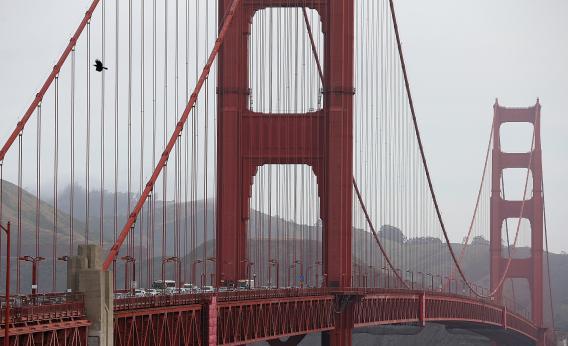I’ve gotten a few requests to do some San Francisco housing policy blogging but, honestly, I don’t have much that’s innovative to say about it. The city appears to be engaging in a wide array of overlapping efforts to subsidize/preserve a mostly fixed stock of “affordable” housing via rent control initiatives and strong tenant’s rights at SROs and largely ignoring the possibility of creating more housing. If you look at the city’s zoning map (PDF) you’ll see that the vast majority of San Francisco’s land mass is zoned for fairly rinky-dink structures including places that are along BART/Muni routes or clearly within walking/biking distance of the central business district.
The existing mass transit corridors seem to be deliberately underutilized:
When the Planning Commission approved the Eastern Neighborhoods Program on August 17, 2008, it recommended a height limit of 85 feet, or 8-story buildings, for Mission Street, between 16th Street and Cesar Chavez Street, in order to take advantage of Mission Street’s high transit service, including BART and Muni lines, and to meet citywide and regional smart growth objectives by increasing housing near transit.
Why restrict a heavy rail corridor to eight-story buildings? Well, I can’t think of a good reason, but the city decided that was far too tall:
However, based on concern that the proposal was not meeting the needs of the neighborhood and may have unintended impacts, the Board of Supervisors voted to reduce most parcels along Mission Street to their current height limits or to whatever staff proposed, whichever was lowest. In addition, the Board inserted a clause in the Eastern Neighborhoods legislation requiring staff to begin a separate process to better understand the policy concerns related to raising height limits on Mission Street, particularly concerns about local businesses and affordable housing.
So there you have it. There’s zero possibility for sprawl inside the city of San Francisco (it’s all built out), so you either build up or you just don’t build. And the preference, apparently, is to not build. That way you preserve the existing physical plant and handle “affordability” as a question of allocating an increasingly scarce resource. I’d say San Francisco is a nice place—great quality of life, strong tech sector, high wages—and it would be good to actually make it more plentiful. But that means building.
San Franciscans seem taken with the fact that the city, as it exists, is already the “second-densest” large city in America. Which is true. But also a bit misleading. At dinner the other night, some people were talking about whether Oakland might evolve into a kind of Brooklyn to San Francisco’s Manhattan. But Brooklyn is actually twice as dense as San Francisco. San Francisco, in fact, is less densely populated than Queens. For San Francisco to be as dense as Manhattan, it would have to house 3.2 million people instead of 805,000. Obviously that would have a transformative effect on Oakland as well in various regards. It’s obviously not “politically realistic” to imagine San Francisco rezoning to allow that kind of density. But uniquely among American cities, I completely believe that 3.2 million people would want to live in a hypothetical much-more-crowded version of the city if they were allowed to. You’d need to build another heavy rail line or three and do some better dedicated bus lanes, but it’d be affordable with a much larger tax base.
